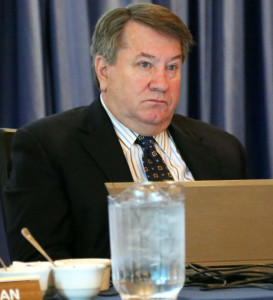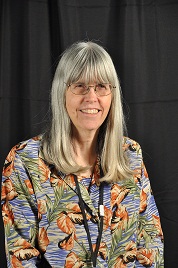Idaho’s latest graduation rates are a mix of good news and old news.
On the plus side, numbers went up statewide. The 78.9 percent graduation rate for 2014-15 represented an increase from 77.3 percent from 2013-14 — a figure that ranked No. 41 in the nation.

But once again, graduation rates in alternative and virtual charter high schools lagged behind traditional high schools and brick-and-mortar charter schools. And that could rekindle a debate that has played out in Statehouse committee rooms during the 2016 legislative session. Recently, State Board of Education President Don Soltman publicly singled out the alternative and virtual schools, saying their performance has hampered statewide graduation rates — much to the chagrin of charter school officials.
The improvements
First, the good news. The improvements were widespread.
- Graduation rates went up in 86 traditional and charter high schools statewide. An additional four high schools held steady with a 100 percent graduation rate. Meanwhile, graduation numbers decreased in 69 schools.
- Fifteen high schools had a perfect graduation rate, up from 11 schools in 2013-14. Schools on this year’s 100 percent list: Cambridge Junior-Senior High School; Clark Fork Junior-Senior High School; Compass Public Charter School, Meridian; Deary School; Garden Valley School; Kendrick Junior-Senior High School; Kootenai Junior-Senior High School, Harrison; Mackay Junior-Senior High School; Meridian Medical Arts Charter School; Midvale School; Mullan Junior-Senior High School; North Gem Senior High School, Bancroft; Notus Junior-Senior High School; Sugar-Salem High School, Sugar City; Vision Charter School, Caldwell.
- Graduation rates were up in six of the state’s 10 largest districts: Boise, West Ada, Bonneville, Caldwell, Vallivue and Twin Falls.
These one-year results are noteworthy, in part, because they represent an apples-to-apples comparison.
The 2013-14 and 2014-15 numbers use a more rigorous method of calculating graduation rates — tracking students from ninth through 12th grade. (In the past, Idaho only tracked 12th graders, and calculated its graduation rate accordingly.) But after switching to this nationally accepted accounting method, state education officials learned that Idaho’s graduation rates are among the lowest in the nation.
The trouble spots
Another trend is unmistakable, and not unexpected. Alternative high schools and virtual charter high schools accounted for the state’s 10 lowest graduation rates in 2014-15:
- Richard McKenna Charter High School, Mountain Home: 20.3 percent.
- Emerson High School, Idaho Falls: 19.5 percent.
- iSucceed Virtual High School, Boise: 19.3 percent.
- Idaho Youth ChalleNGe Academy, Pierce: 16.7 percent.
- Independence Alternative High School, Blackfoot: 16.0 percent.
- Mount Harrison Junior/Senior High School, Heyburn: 15.0 percent.
- Idaho Virtual Academy Vision Alternative School, Meridian: 13.9 percent.
- New Vision Alternative, Post Falls: 13.6 percent.
- Richard McKenna Alternative Charter High School, Mountain Home: 12.9 percent.
- Canyon-Owyhee School Service Agency Academy, Wilder: 7.9 percent.
Still, some alternative and virtual schools showed signs of improvement.
Graduation rates improved in six of the state’s nine virtual charters, according to an Idaho Education News analysis. At the Idaho Virtual Academy, Idaho’s largest charter school, graduation rates improved from 21.2 percent to 32.7 percent. The Idaho Connects Online School’s graduation rate improved from 18.6 percent to 44.8 percent.
Trends in alternative schools were a mixed bag. Graduation rates improved in nine alternative high schools, and dropped in 11.
The debate so far — and the next round
As Idaho education leaders come to grips with the new math — and graduation rates that lag below the national average — the debate over graduation rates has intensified.
It began with Soltman’s Jan. 25 comments to the Joint Finance-Appropriations Committee. Presenting a State Board analysis of the 2013-14 graduation rates, Soltman reported a 20 percent graduation rate in the virtual schools, and a 36 percent graduation rate in the alternative schools. “(This) dragged down the overall state average,” Soltman told budget-writers.

Charter school leaders were quick to take issue with Soltman — and point out that virtual schools serve a high percentage of at-risk students. One week later — after hearing from 2014-15 Idaho teacher of the year Kim Zeydel, an instructor at the Meridian Academy alternative school — Rep. Lance Clow made a thinly veiled reference to Soltman’s original remarks.
“I look at the alternative schools specifically as, you’re not dragging the graduation rate down, you’re pushing the graduation rate up,” Clow, R-Twin Falls, said during a Feb. 1 House-Senate education committee meeting.
Three days later, executive director Matt Freeman said the State Board’s research had received “unwarranted negative play” in the media.
“The purpose of this analysis was not to point fingers, but rather to provide the board and schools with a lower-level of detail upon which to base data-driven strategies for improvement,” Freeman told the Senate Education Committee.
The State Board isn’t abandoning this research effort. The board is just starting to crunch the new numbers, and again break down graduation rates by type of school, State Board spokesman Blake Youde said Thursday. The board will also look at five-year trends and study graduation rates based on student demographics.
While state superintendent Sherri Ybarra hailed the most recent graduation rates, her State Department of Education has its own research to do. And that includes looking over the State Board’s research, which the department hasn’t had a chance to do, Ybarra spokesman Jeff Church said this week.
This research is on the back burner, he said, since the Legislature is in session. “We haven’t had a lot of time to dive into those numbers.”
